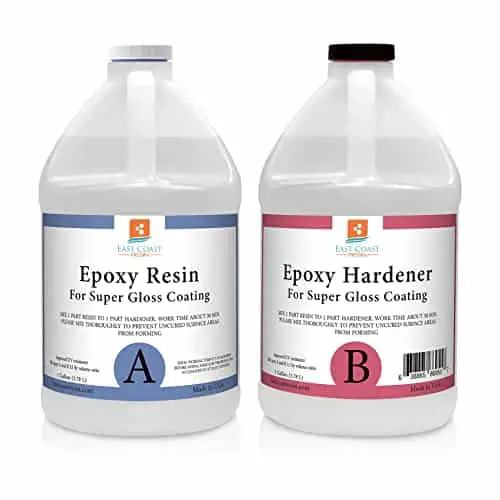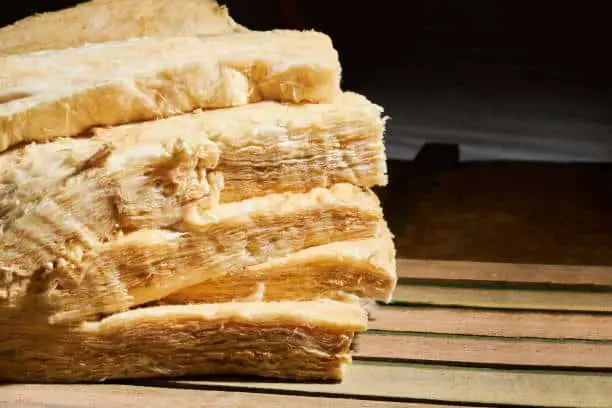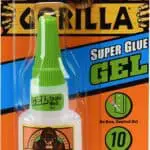This tutorial will show the answer to how to glue fiberglass to fiberglass. Also, you will know more about many types of adhesives suitable for use on glass fibers and how to bond, prepare, and cure glass surfaces together.
After reviewing this article, we think you will find it easier than ever to glue these fiberglass filaments. Let’s go into the details now!
Things You’ll Need

Before going to the detailed instructions on gluing fiberglass to fiberglass, you need to know the tools and essential notes before you start working.
To properly glue fiberglass to fiberglass, you must prepare simple adhesives, including Super Glue, Polyurethane 2-Part Adhesive, and Epoxy Resin.
There are many different types of bonds currently. If you want to optimize the budget, you can refer to the “Plastic Fusion” of Super Glue Corporation.
This is an acrylic-based epoxy. Its hardener and resin have super-adhesive properties for bonding fiberglass and other materials.
You need a simple fiberglass surface preparation to ensure sufficient contact.
The best surface is guaranteed to be glued flat without lumps or protrusions. To create a flat surface, you can use a sanding block with 250-300 grit sandpaper.
Clean the reflective surface with acetone to remove any remaining dust and fiberglass resin. You must clamp the glued surfaces firmly to fit together if the pieces are slightly bent or warped.
You resort to clamps if room temperature or gluing conditions are insufficient.
It is recommended to use spring clamps that are strong and have the effect of distributing pressure evenly.
It would help if you found a well-ventilated working environment to limit the inhalation of too much Epoxy affecting health.
In addition, this area must be kept from the fire. The most suitable temperature is from 68 – 80 degrees F for the Epoxy to cure quickly and effectively.
You should wear rubber gloves and an apron to avoid contact with Epoxy.
How to Glue Fiberglass to Fiberglass?

Gluing fiberglass to fiberglass is not as rugged as you think. However, this process requires you to be meticulous.
Here is a guide on how to glue fiberglass to fiberglass that you can refer to.
Step 1: First, lay a large piece of aluminum foil on the flat surface you prepared earlier. This prevents the Epoxy from sticking to your working side.
Step 2: Next, you need to put the piece of fiberglass on the foil.
Step 3: Dampen a clean cloth with warm water to remove any dirt on the fiberglass surface you want to stick.
Step 4: Wipe the fiberglass again with a clean, dry cloth until you can no longer see any moisture on the fiberglass, and let the fiberglass dry for a few minutes.
Step 5: Use the Super Glue syringe to remove the Epoxy and mix the product well for about a minute.
Step 6: Continue to apply an adequate amount of Epoxy onto the first piece of fiberglass at about one dot of Epoxy for every square inch of fiberglass. For a tighter bond to the edge of each fiberglass, you should place the Epoxy about an inch away from the edge so that it doesn’t spill.
Step 7: Squeeze the two fiber glasses so that they stick together. You need to hold the pieces in place until the epoxy cures (about 5 – 10 minutes). If you’re gluing one patch directly onto the other, you do not need to keep them.
Step 8: Epoxy will cure entirely within 24 hours.
Warning: During the gluing process, if epoxy gets on your skin, you must wash it off with an industrial hand sanitizer, such as Zep Reach.
If epoxy gets into your eyes, you should immediately rinse with water and go to the nearest medical facility for help.
FAQS
1. Will Adhesive Stick to Fiberglass?

Gorilla Heavy Duty adhesives.
Fiberglass is a challenging surface for the machine. Its surface is very smooth and non-porous, making it difficult for ordinary adhesives to adhere to it.
Therefore, you need to find a specialized adhesive that is strong enough to stick to smooth surfaces.
GorillaWeld is one of the typical representatives. It is waterproof, very flexible, can create a permanent bond, and is perfectly suitable for sticking fiberglass.
2. What Is a Good Epoxy for Fiberglass?
To best match fiberglass, you need to look for a low-viscosity epoxy, such as a 5:1 system or a 2:1 epoxy system, and a silica binder to best thicken the epoxy.
3. What Material Will Fiberglass Not Stick To?

Fiberglass can bond to various surfaces, including wood
Fiberglass can bond to various surfaces, whether metal, plastic, wood, or porous. However, you must know that fiberglass usually does not bond to treated wood.
4. Are fiberglass resin and epoxy the same thing?
Fiberglass resin and epoxy are not the same things at all. Epoxy fiber resins are made mainly from the reaction between bisphenol A and epichlorohydrin, while organic acids and alcohols mainly make fiberglass resins.
5. What happens if fiberglass gets wet before it cures?
Fiberglass insulation is made from glass fibers. In case they get wet, the water droplets will shift the air in the space between the fibers.
This will reduce the insulating ability of the fiberglass. Therefore, you must not let the fiberglass get wet before it cures.
Conclusion
Above is the tutorial on how to glue fiberglass to fiberglass and the supplies you will need. Gluing the fiberglass together is not too difficult; you need to focus and be careful in the process to avoid unnecessary risks, as we have warned. Hopefully, the information in this article will be helpful to you. Thanks for your attention!
